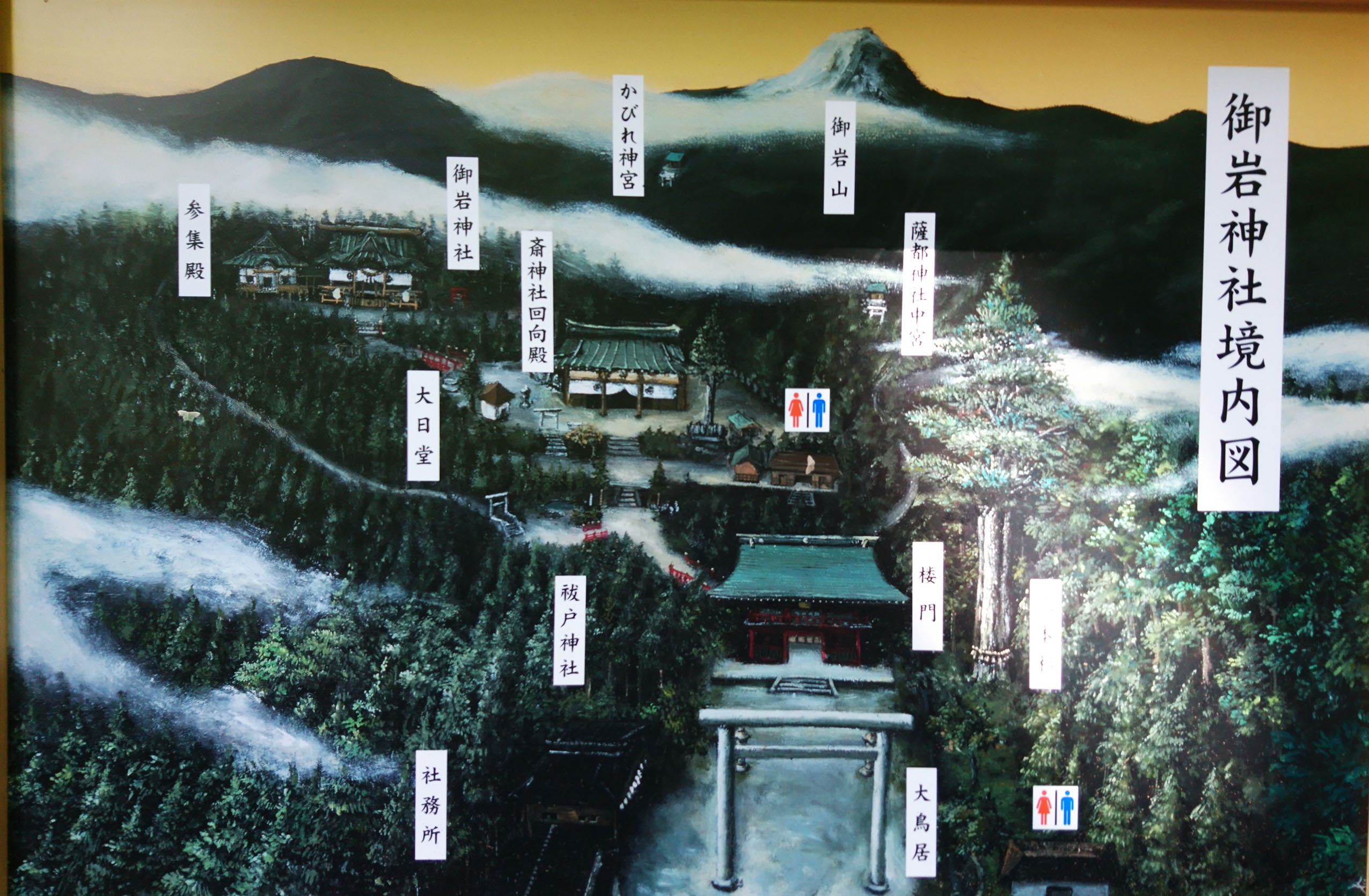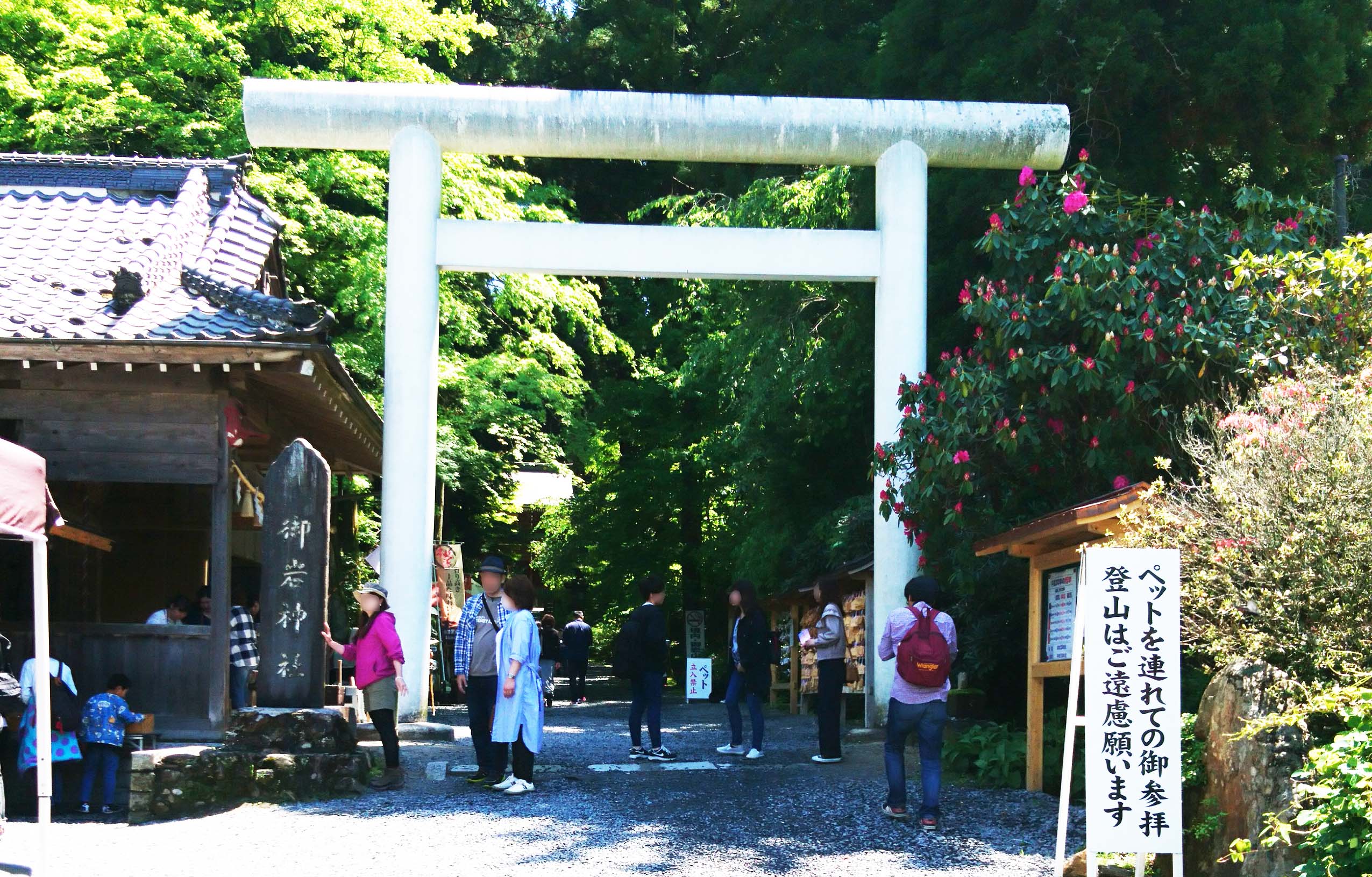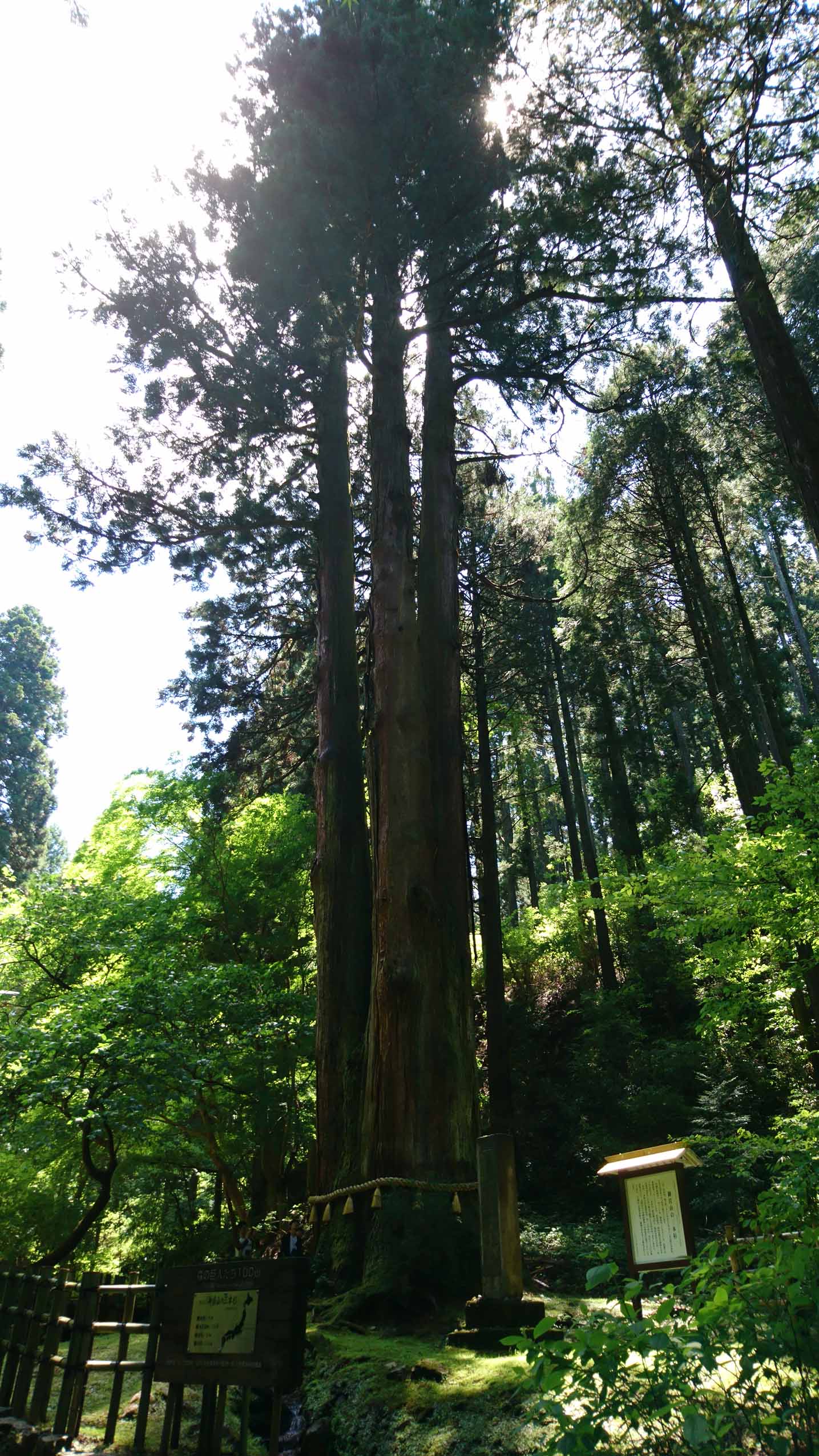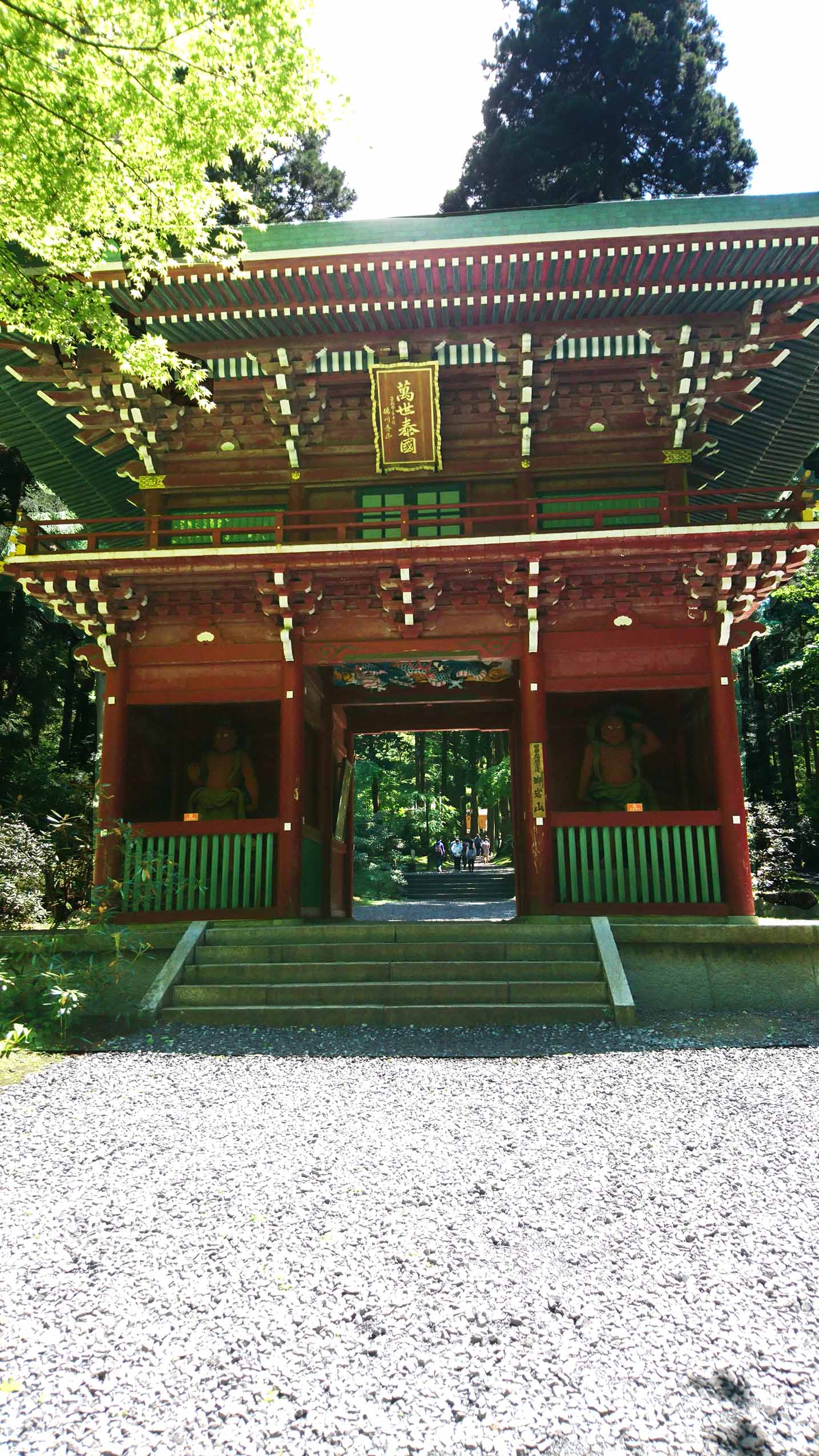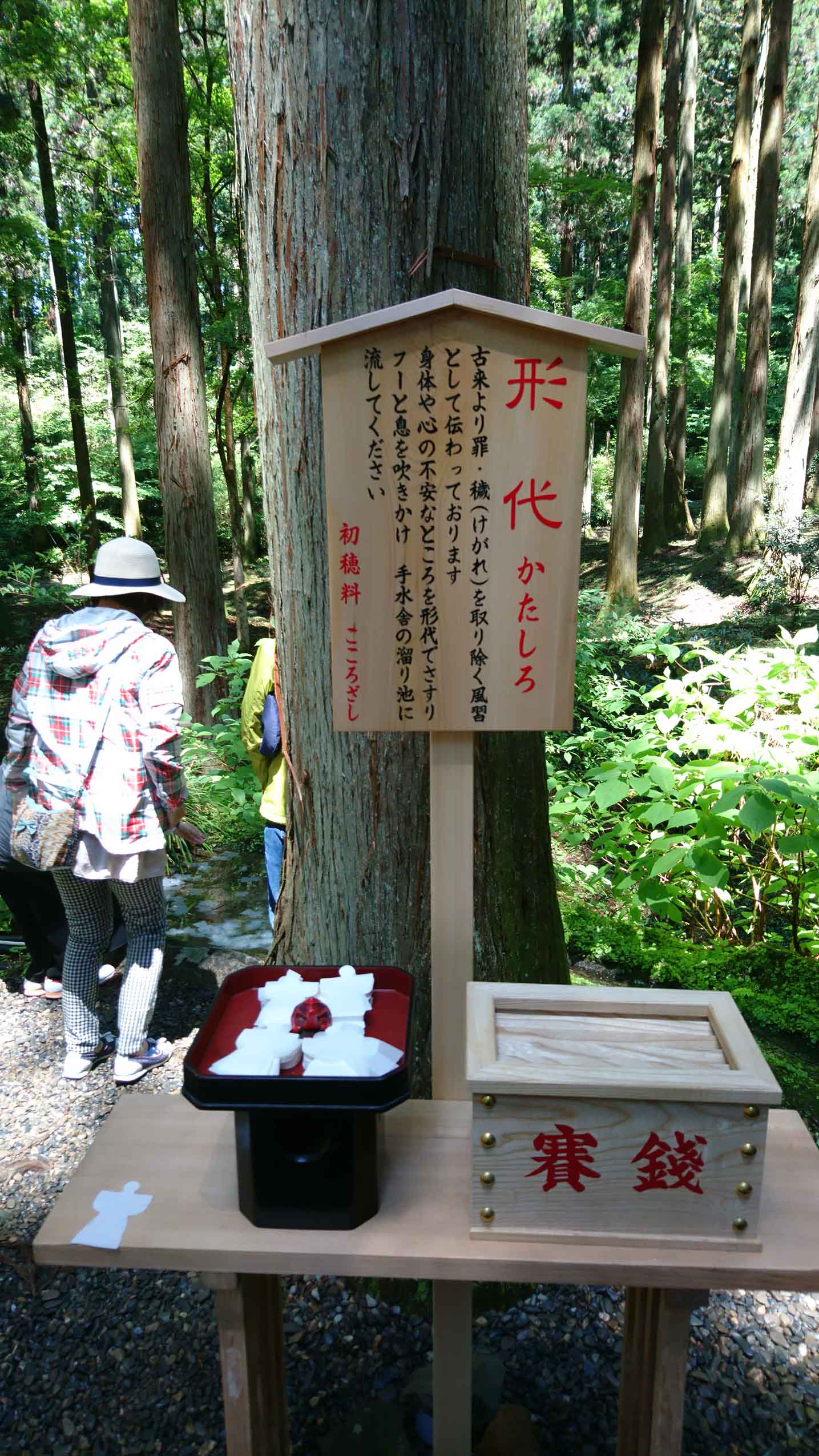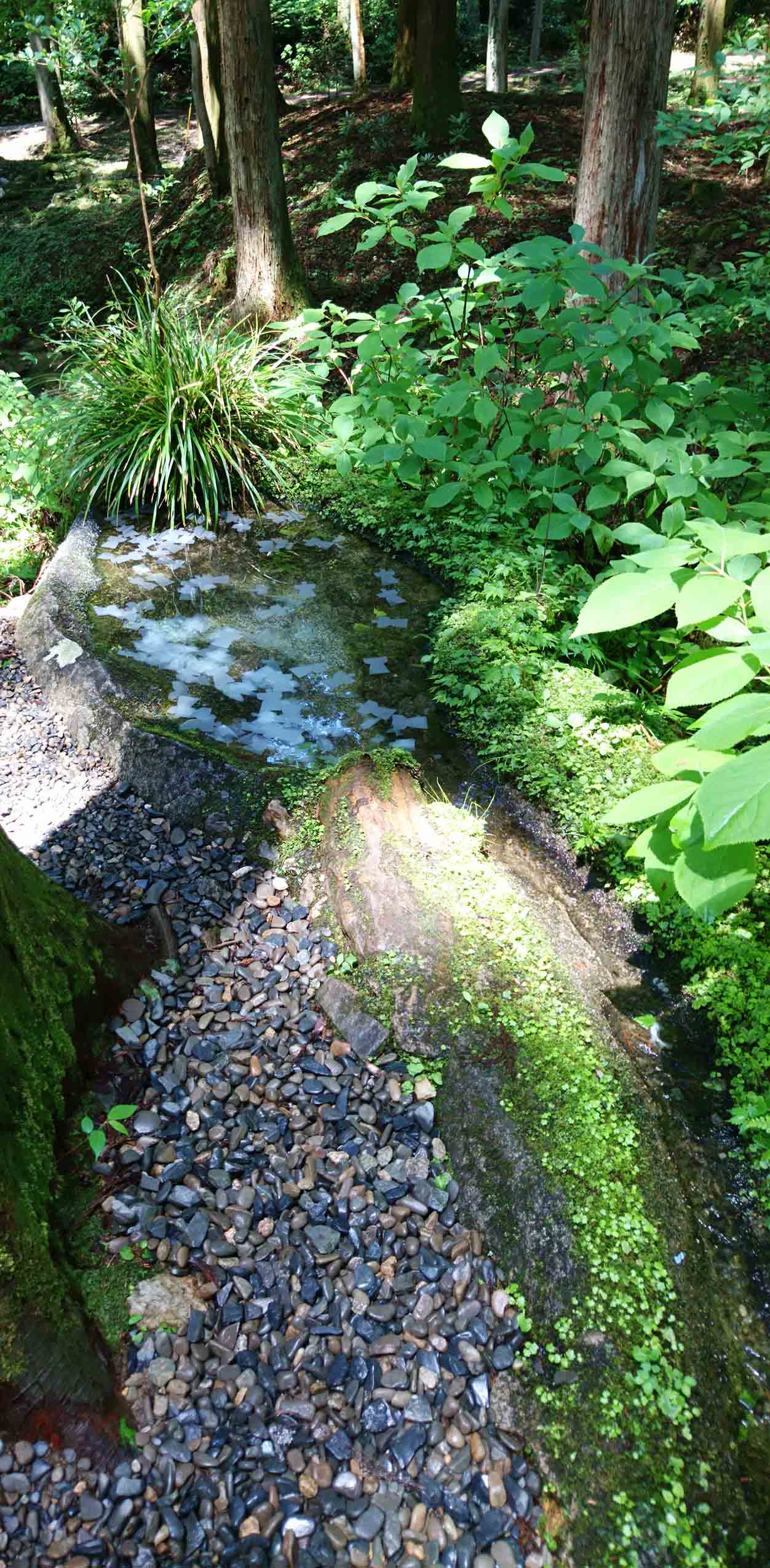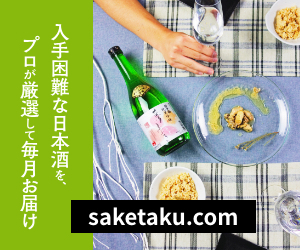- Home
- My Trip Diary
- Walking on the approach to Oiwa Shrine – Mt. Oiwa, where gods are – Part 3
Walking on the approach to Oiwa Shrine – Mt. Oiwa, where gods are – Part 3
- 2019/1/20
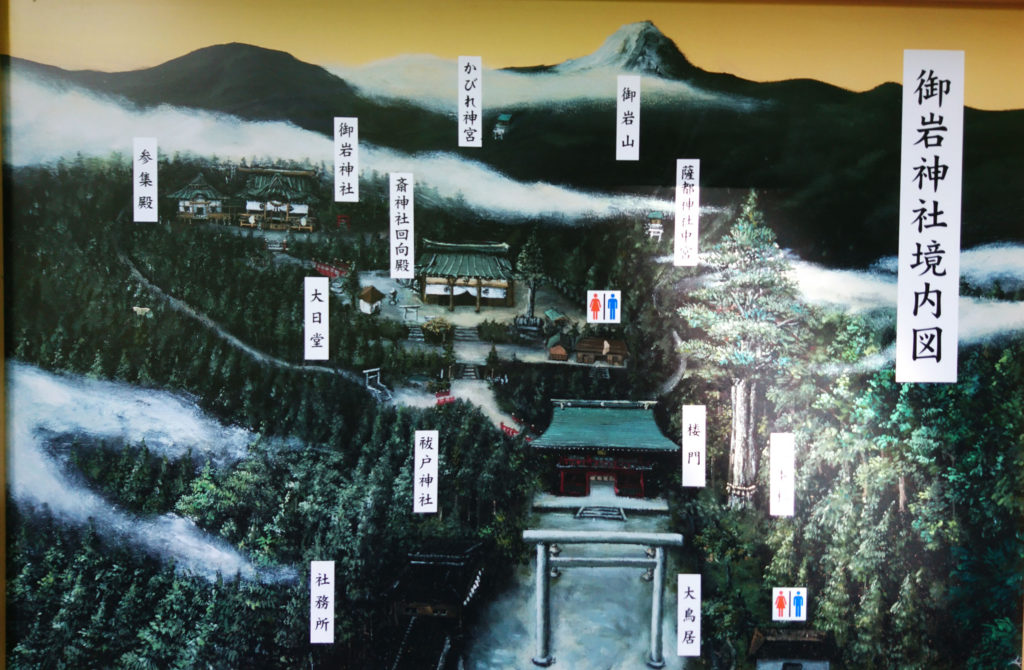
Good evening!
Thank you very much for visiting this blog.
Continued from the last blog, I’d like to write about my visiting Oiwa Shrine.
The picture above is the painting of Oiwa Shrine’s map from the guide plate at the shrine.
The last report ended at when I took a taxi to the shrine in the last blog.
I’d like to write about arrival and what I saw from O-Torii (the great front shrine gate) to Sai Jinja (Sai Shrine) Ekoden and Oiwa Shrine through Romon (tower gate).
Sorry but there’s no report of Nihonshu or restaurants either^^;
Contents
Arriving at Oiwa Shrine and reception for the ceremony
I got on a taxi at a little before 11:00 in the morning, and arrived at the shrine around 11:10.
The shrine was a little way off from Prefectural Road 36, so I was planning to get off the taxi along the road.
But the driver kindly took me to the shrine’s Torii gate.
This is the gate.
Because it was Golden Week (Japan’s long National holiday in May), there were many people.
The left front of the gate was the shrine office, and I checked in for Oharai (purification) there.
Miko (shrine maiden) there asked my name and address, and she asked me if I was sure to choose bigger Ofuda.
Indeed, the sample of the Ofuda was big.
I thought that it was ok to put in my backpack, so I told her that I would take the bigger one as the original plan, and paid the ceremony donation.
After I went home, I checked the size of the Ofuda and it was 40 to 50 cm length and 10 to 15 cm width.
She said that I would be able to enter Sanshuden (building for waiting) next to Haiden (building for praying) 15 minutes before the ceremony.
I had 30 minutes, so I walked to see the details of the shrine to Haiden.
From Torii to Romon
Now, I’d like to introduce the details of inside of Oiwa Shrine.
After going through Torii gate in the previous photo, this one appeared first.
This is Sanbon Sugi (Three Japanese cedar trees).
It is estimated to be more than 500 years old, and the guide board said that its height was 39m.
The bottom is 1 tree, and it divides into 3 in the upper part.
It is not found whether it was originally 1 tree, or 3 trees stuck together in the bottom.
Whichever it was, it looked so sacred.
After Sanbon Sugi, I came to Romon (tower gate).
There were statues in the gate.
The right was “Agyo”, and the left was “Ungyo”.
Both are guardian gods in Buddhism.
“A” is the first sound and “Un” is the last sound of utterance in Sanskrit characters. So they express “the beginning and ending of the world” like “the Alpha and the Omega”.
“Romon” means a gate with 2 floors.
This kind of gate is usually built in temples and the 2 gods protect the temple as I mentioned in the blog of Myogi Shrine.
It can be said that this shrine might have had the influence of the idea of Shinbutsu Shugo (syncretism of Shintoism and Buddhism), and there’s high possibility that the shrine had Jinguji (temples which were built in shrine’s properties).
Romon and Shinbutsu Shugo
Shinbutsu Shugo means a kind of religion or phenomenon which came from an idea of mixing Shintoism and Buddhism.
You might have heard that Japanese people are good at creating unique things learning from foreign technologies or cultures. This idea of Shinbutsu Shugo can be a typical example.
Shintoism is an old religion from the ancient times, and Buddhism came to Japan in the 6th century.
In Japan, Buddhism was regarded as the belief to protect the country since the Nara period.
It received support from the Imperial Family, and it spread among the Imperial people, noble people, and local powerful families.
As a result, the people in the ruling class who used to support belief in Japan’s ancient gods started to believe Buddhism as well.
After the 8th or 9th century, they built temples in shrine.
Such temples are called “Jinguji”.
After that, from the middle of Nara period to the Heian period, political wars and famine happened one after another in Japan.
In such time, Buddhist monks did social welfare works and they spread Buddhism with new and simple ideas such as Jodo (Heaven) philosophy.
It gradually became popular among ordinary people, and the idea of Shinbutsu Shugo became normal for both the ruling class and ruled class from the Kamakura period to the Edo period (1192-1867).
On the other hand, from the Edo period, the study of Japanese classical literature and Son’no (reverence for the Emperor) philosophy appeared.
The study about the ancient Japan developed.
Some people started to believe that Japan’s true principle should be based on the politic system based on the Imperial family which was the descendant of Amaterasu Omikami (Supreme God in Shintoism) before the introduction of Buddhism and the religious system to deify Yaoyorozu gods (“eight million gods” literally, the mean is all gods in Japan. the idea of ancient Japan believing that gods are in everything around us).
Such people claimed to make Japan back to those times.
It might be humans’ habit that they want to try something they just got to know, or assert it’s great.
This blog is the same^^;
One of the factors which made this movement was Mitsukuni Tokugawa, who was the second lord of the Mito Tokugawa family who ruled Ibaraki Prefecture, in which Oiwa Shrine locates.
He is famous as “Mito Komon” for Japanese people.
He ordered a great project to edit “Dai Nihonshi”, which was a history book to record Japan’s history from the mythical age.
The research and study for it showed the people how Japan’s ancient was.
As a result, it created “Son’no” philosophy.
Son’no philosophy connected with a new idea which appeared after Perry’s arrival, “Joi” philosophy, which is the idea to exclude foreign people from Japan.
It became a big movement called “Son’no-Joi“, and it led the collapse of Edo Shogunate.
It is ironic that a philosophy which was made by one of Tokugawa members themselves broke the Shogunate.
By the way, Mitsukuni who we see in TV dramas as “Mito Komon” is a nice gentleman, but in real, it is said that he was quite a character.
Apart from the episode of “Dai Nihonshi”, it’s said that he was the first Japanese person who ate ramen noodles.
He’s thought to be brimming with curiosity.
In addition, he is known as a person with rebel spirit.
When the society avoided meat-eating and the Shogun of the time, Tsunayoshi Tokugawa, issued strict ordinances of animal protection, Mitsukuni didn’t stop eating meat.
To hear such stories, it is not difficult to understand that he created something to change Japan completely.
Returning to “Shinbutsu Shugo”, it was a common idea until the Edo period, but the people of Sonno philosophy which was against “Shinbutsu Shugo” broke the Tokugawa Shogunate at the end.
After that, the event which every Japanese person should know, “Osei Fukkono Daigorei“, which was the declaration to make Japan back to the style of before the shogunate system was done.
This is what we call “Meiji Ishin (the Meiji Restoration)”.
At that time, the new government issued an ordinance to distinguish Shintoism and Buddhism, to make Japan back to the ancient time and to make politics based on Shintoism.
This is called Shinbutsu Bunri Rei (or Shinbutsu Hanzen Rei) in Japanese.
The instruction of the government was just to separate Shintoism and Buddhism, but it gradually became a subversive activity of temples and Buddhist treasures.
It is thought to be because temples were used by the Edo government to rule the people indirectly, so people should have had some antipathy against Buddhism.
This movement is called “Haibutsu Kishaku”.
In a Japanese cartoon, “Rurouni Kenshin (or Samurai X)”, Anji Osho, who initiated Sagara Sanosuke into “Futae no Kiwami”, became a depraved priest after this “Haibutsu Kishaku”. (Well, it might be an outdated example^^; )
Many Jinguji and Romon were destroyed during this time, but Oiwa Shrine remained its Romon and there are also many “Jizo (stone statues of guardian god for mainly ordinary people)” and the image of Amida Nyorai (one of Buddhism gods).
Probably, the politics around Oiwa Shrine was kind to the people and “Haibutsu Kishaku” didn’t happen there, so we still can see the remaining of “Shinbutsu Shugo” such as great Romon.
Many Jinguji and Romon were destroyed during this time, but Oiwa Shrine remained its Romon and there are also many “Jizo (stone statues of guardian god for ordinary people, especially for children)” and the image of Amida Nyorai (one of Buddhism gods).
Probably, the politics around Oiwa Shrine was kind to the people and “Haibutsu Kishaku” didn’t happen there.
So we still can see the remaining of “Shinbutsu Shugo” such as great Romon.
I’ve written so much about “Shinbutsu Shugo”.
Actually, I was taking lectures about “Shinbutsu Shugo” when I was in university.
It was lectures by Mr. Akio Yoshie, and his class was one of the 5 most interesting classes in my university life.
I remembered the memory writing this blog, and it became so long.
If you got interested in this topic from my explanation above, see Wikipedia, or try Mr. Yoshie’s book, Shinbutsu Shugo.
He explains Shinbutsu Shugo deeper using more episodes such as “Onryo Shinko (worshipping vengeful spirits)” (for example, it’s related to the god of study, Sugawarano Michizane) in this book.
For your information, I put the link of his book on Amazon.
From Romon to Sai Jinja Ekoden
Now, I went through Romon and followed the guide board, and arrived at a place like this below.
This is “Senshin no Ishi (Washing Spirit Stone)”.
It’s said that your spirit gets washed if you place your hands on it.
I washed my spirit there, and walked up the next stone stairs.
I found another thing at left side.
This is “Gosho Guruma (Bodai Guruma)”.
As the guide board in the photo says, there is a wooden wheel inside the stone pillar.
If you turn the wheel upwards, you will have your dream in this life come true, and if you turn it downwards your dream of the next life will come true.
In this life, I want to get out of these hard days….
For the next life, hope that the life will be less hard and will be happier…….
I turned the wheel thinking such things.
After going further, I arrived at Sai Jinja (Sai Shrine) Ekoden.
As the name says, a Shinto god is deified there.
At the same time, statues of Dainichi Nyorai (Buddhist god), which is a prefectural cultural property, and Amida Nyorai (another Buddhist god), which is a city cultural property, are also placed in there.
Indeed, this shrine looks like a temple.
This is my personal supposition that there was a temple, which means a Jinguji, was there.
Like temples, there was a painting of a dragon on its ceiling. (I didn’t take the photo, but I found a blog with the photo. Please see it if you are interested in it.)
This building remains the memory of Shinbutsu Shugo which gods and Buddhas are in the same place.
To Haiden
In Oiwa Shrine, there are other interesting things, not only buildings.
After going more from Sai Jinja Ekoden, there was an interesting thing like this below.
It’s Katashiro.
Like the board explains, it’s paper of human shapes to purify yourself by sending your sins inside to the paper. (The white thing in the photo is Katashiro.)
You rub your part of your body which you are worried about, and then you blow on it and throw it in the water.
But if you know movies of Onmyoji (people who practiced Yin Yang philosophy), you might imagine the scene that someone hold Katashiro with his forefinger and middle finger, blow on it, and throw it to his enemy to attack, rather than using Katashiro for the purification.
I didn’t have my enemy to attack then, so I just blow on it and throw it in the water to wash myself.
I hope that bad lucks and evils around me left with it^^
On the opposite side of the photo above, there was a Chozuya (a place to wash hands and mouth when visiting shrine).
I went up stone stairs over Chozuya, and arrived at Oiwa Shrine’s Haiden.
I stop here now, and I will write about my purification ceremony in the next blog.
It's our great pleasure if this article is helpful for you.
Restaurant Information
| Shop Name | |
|---|---|
| Prefectures | - |
| Tel | |
| Address | |
| Nearest Station | |
| Homepage | - |
| Business Hours | - |
| Holiday | |
| Introduction | |
| Sake List |
|

